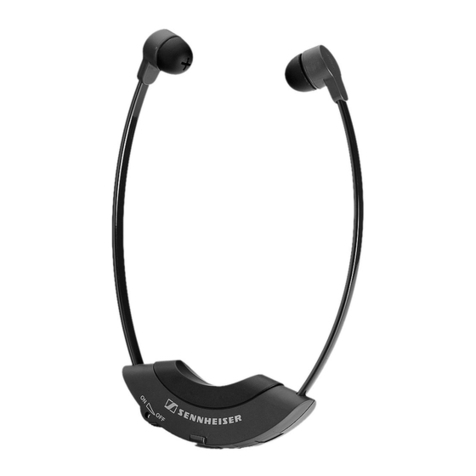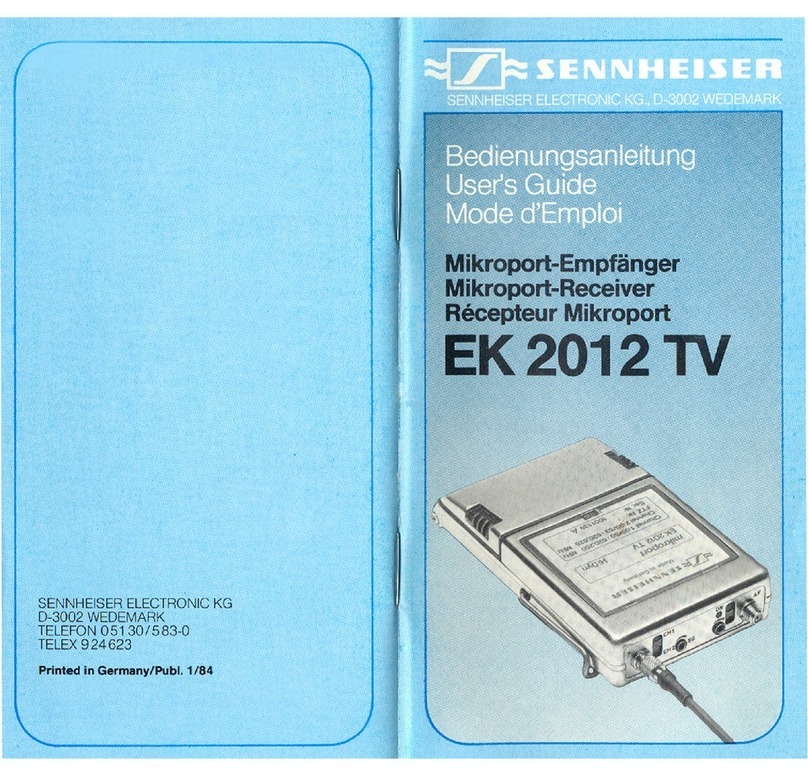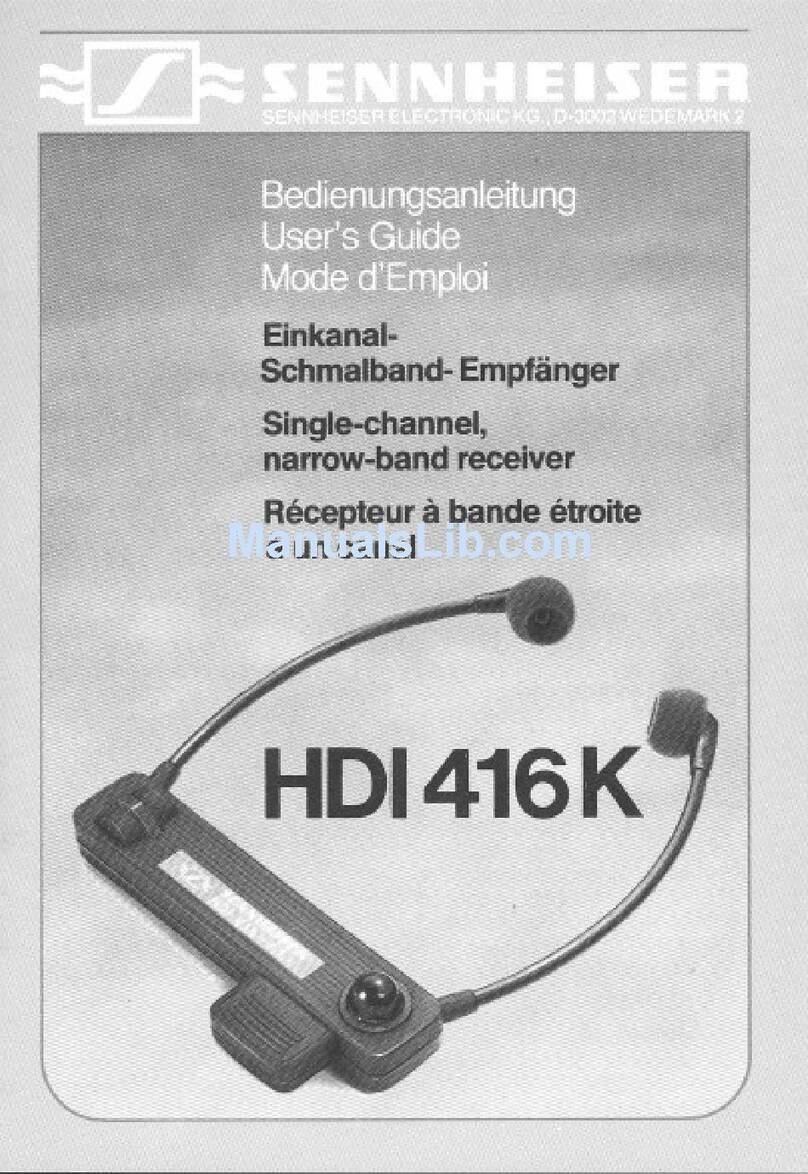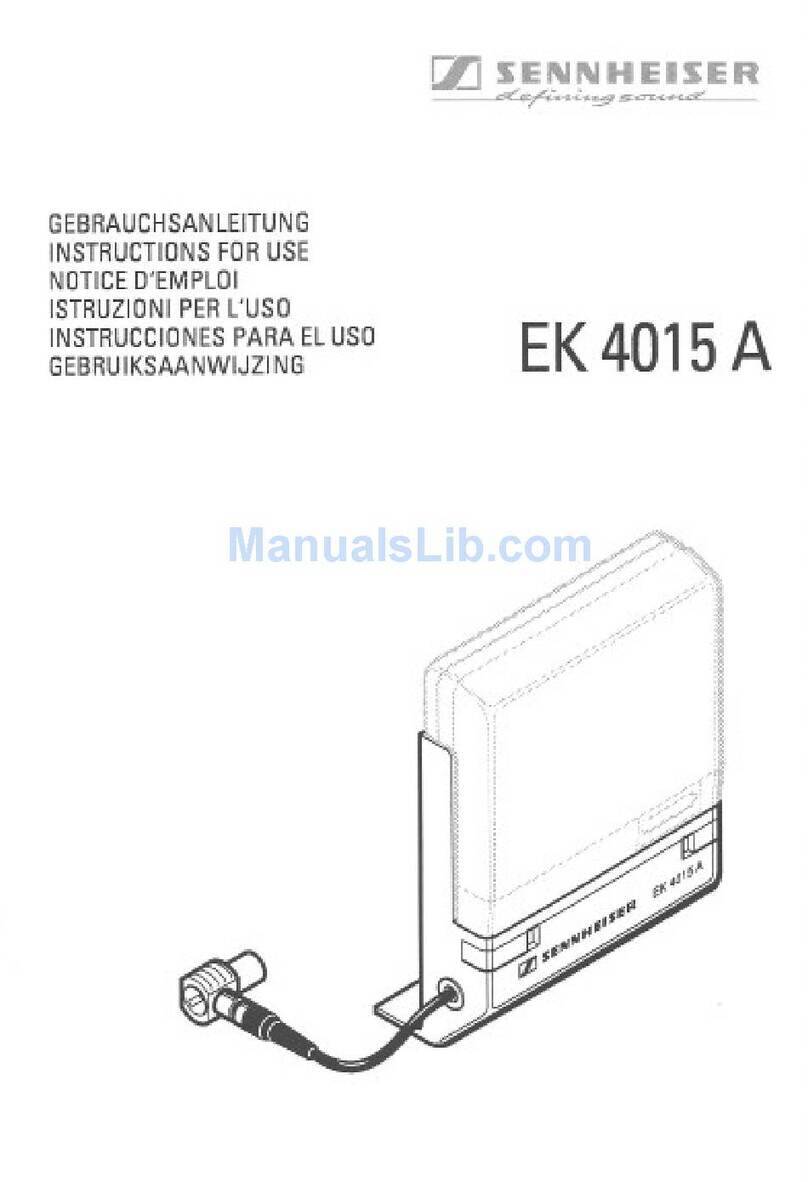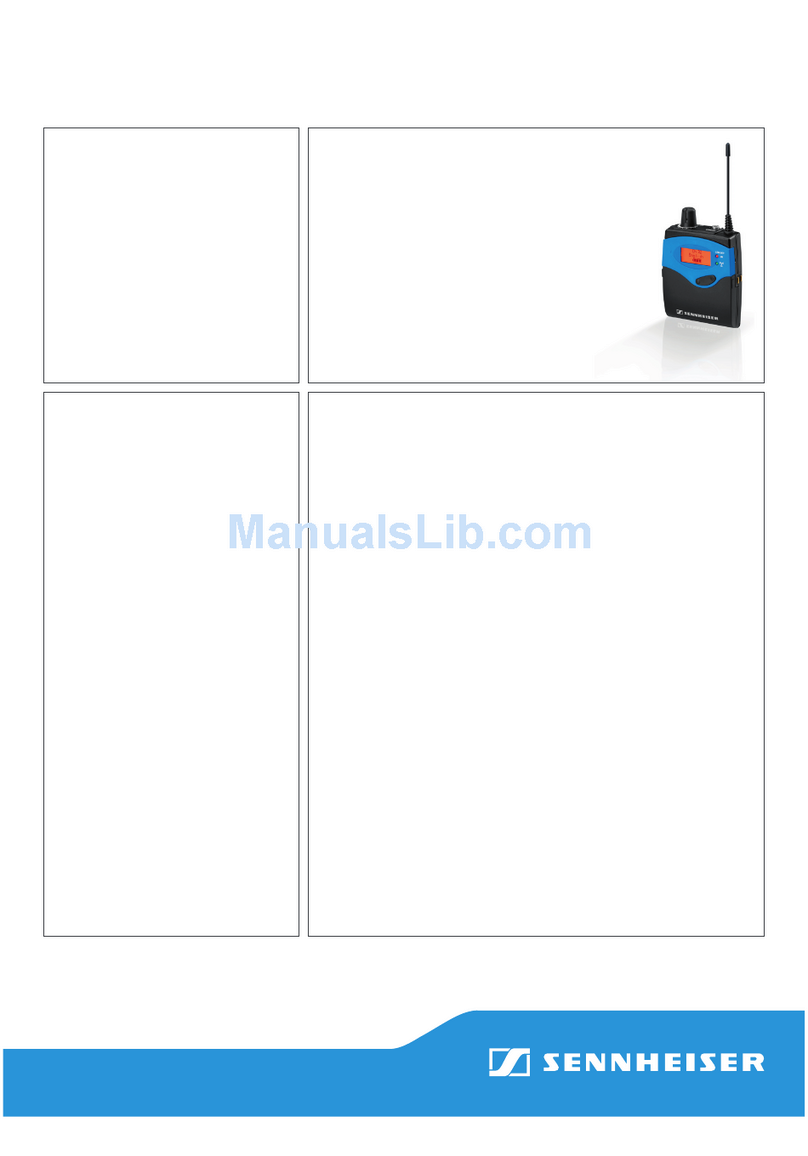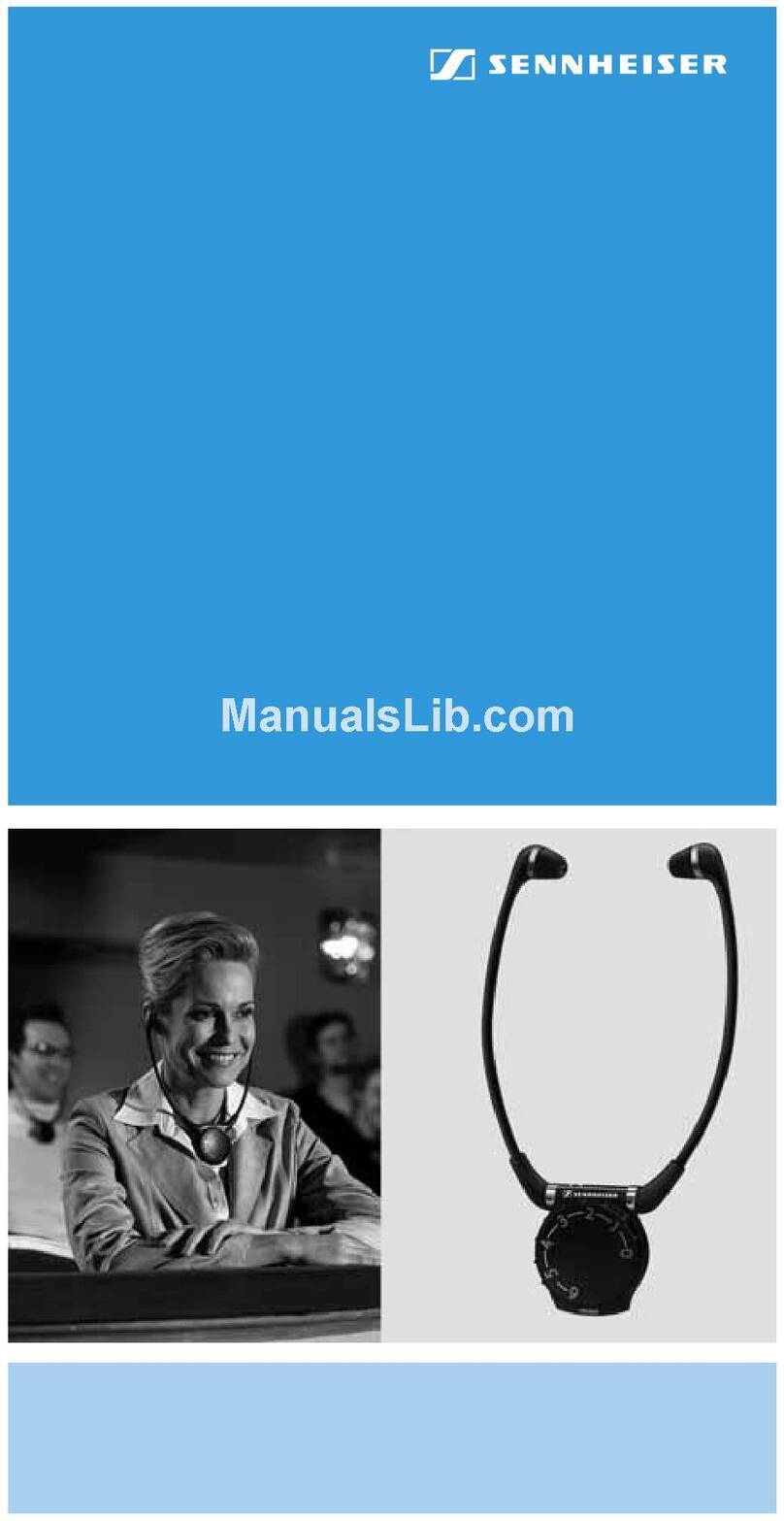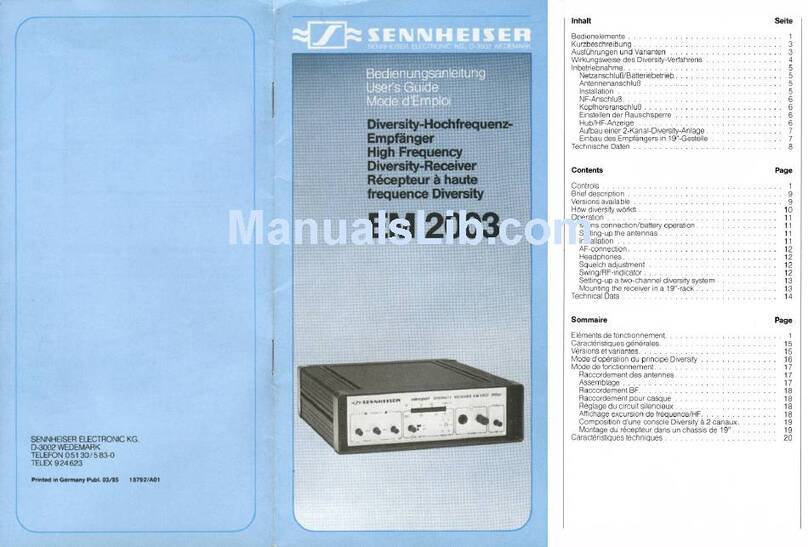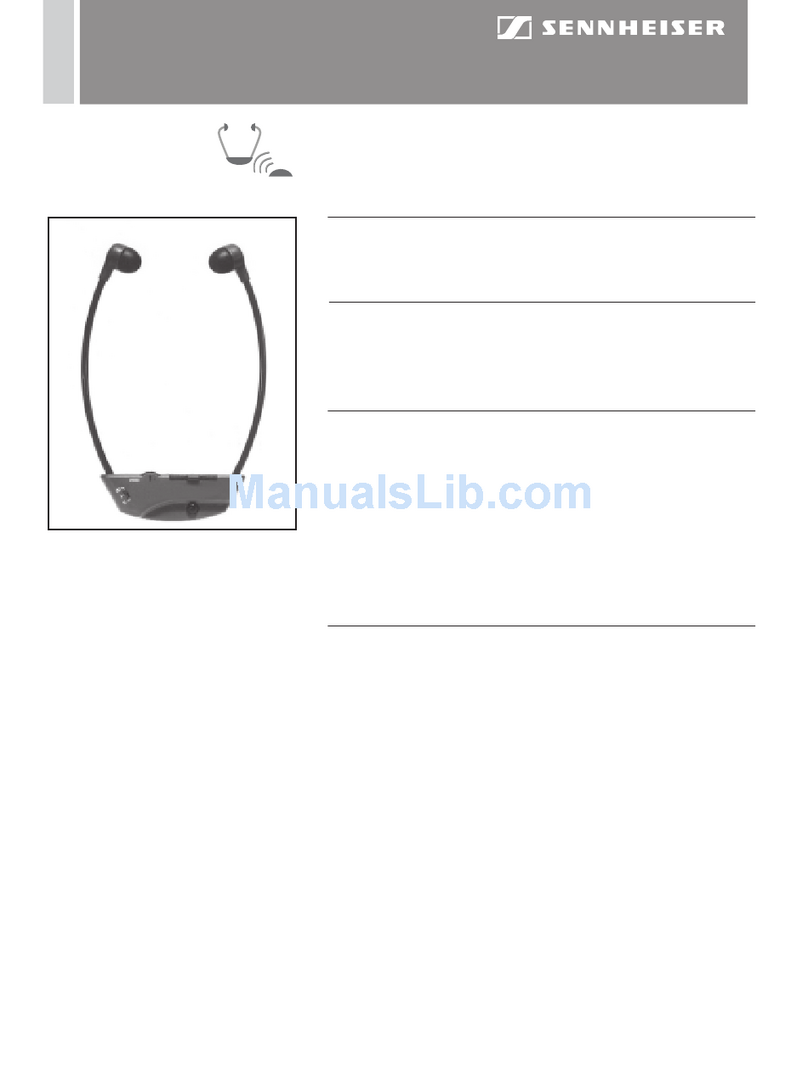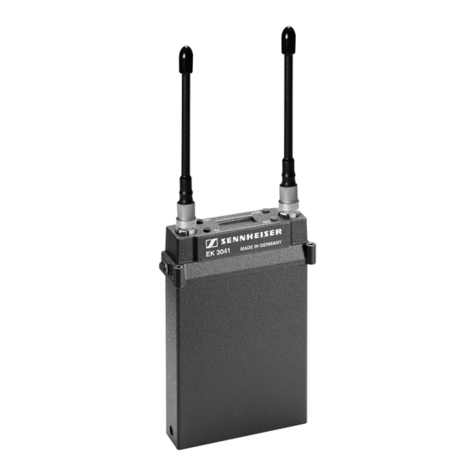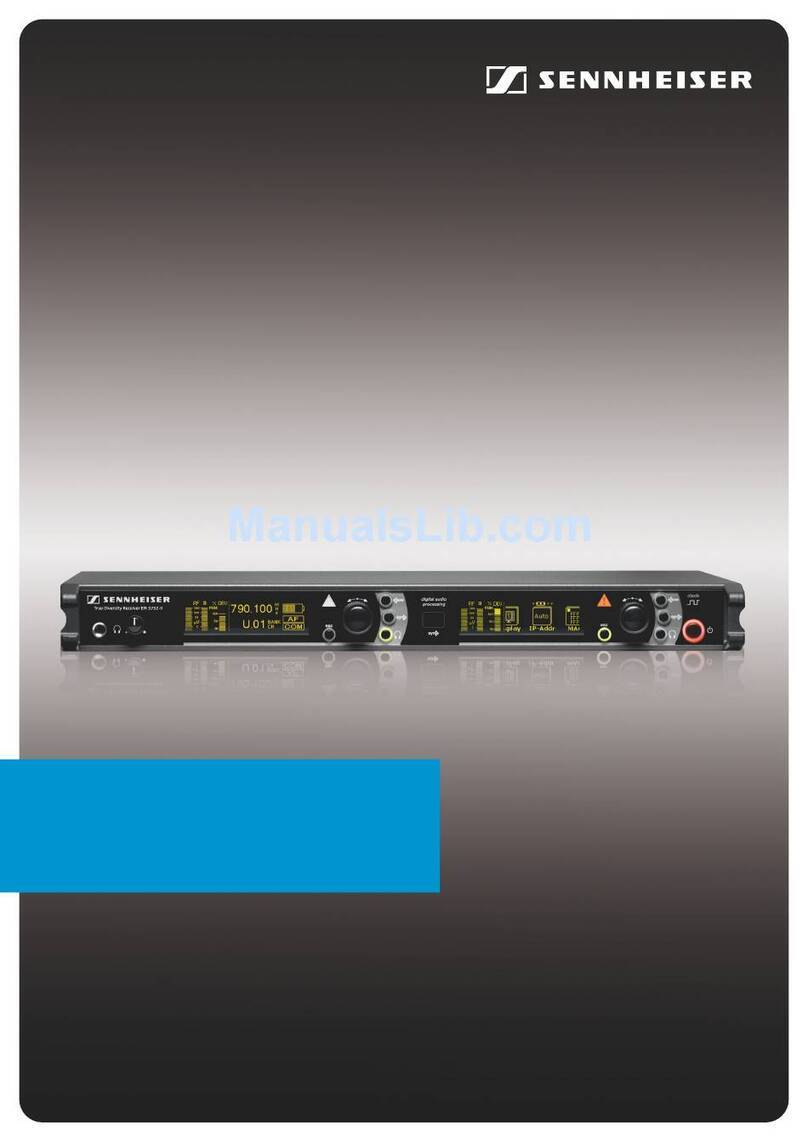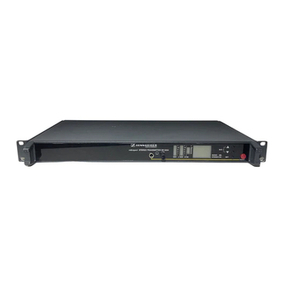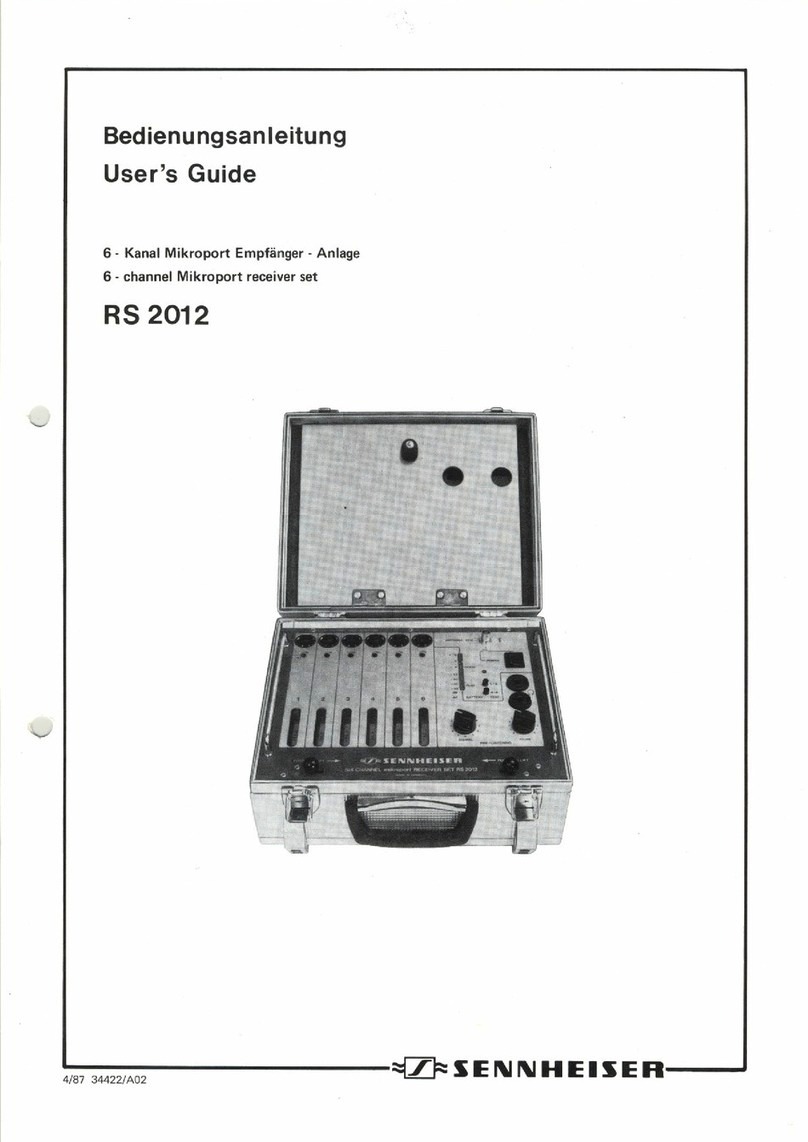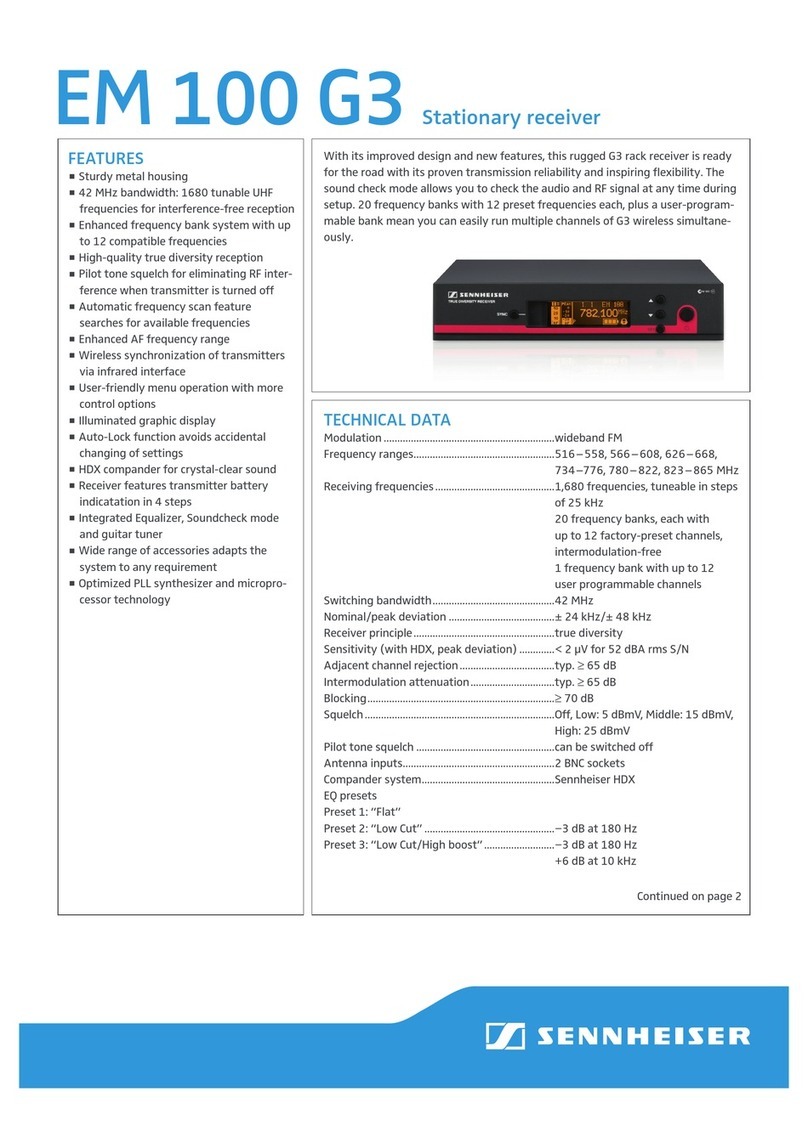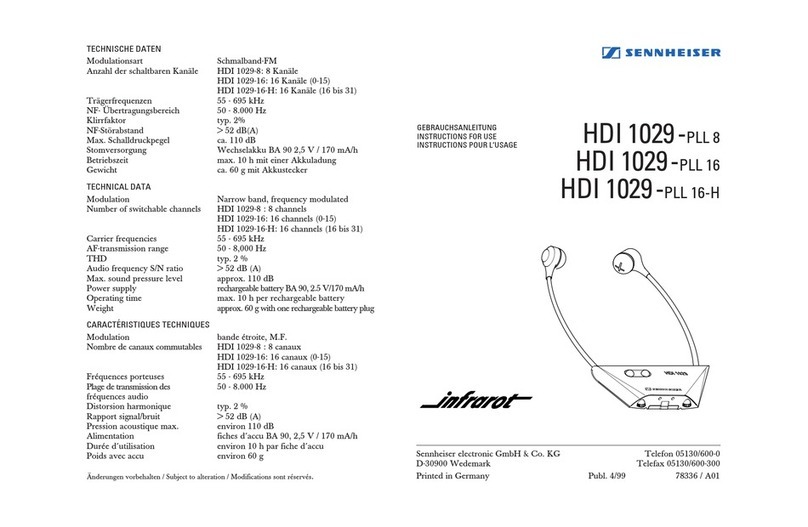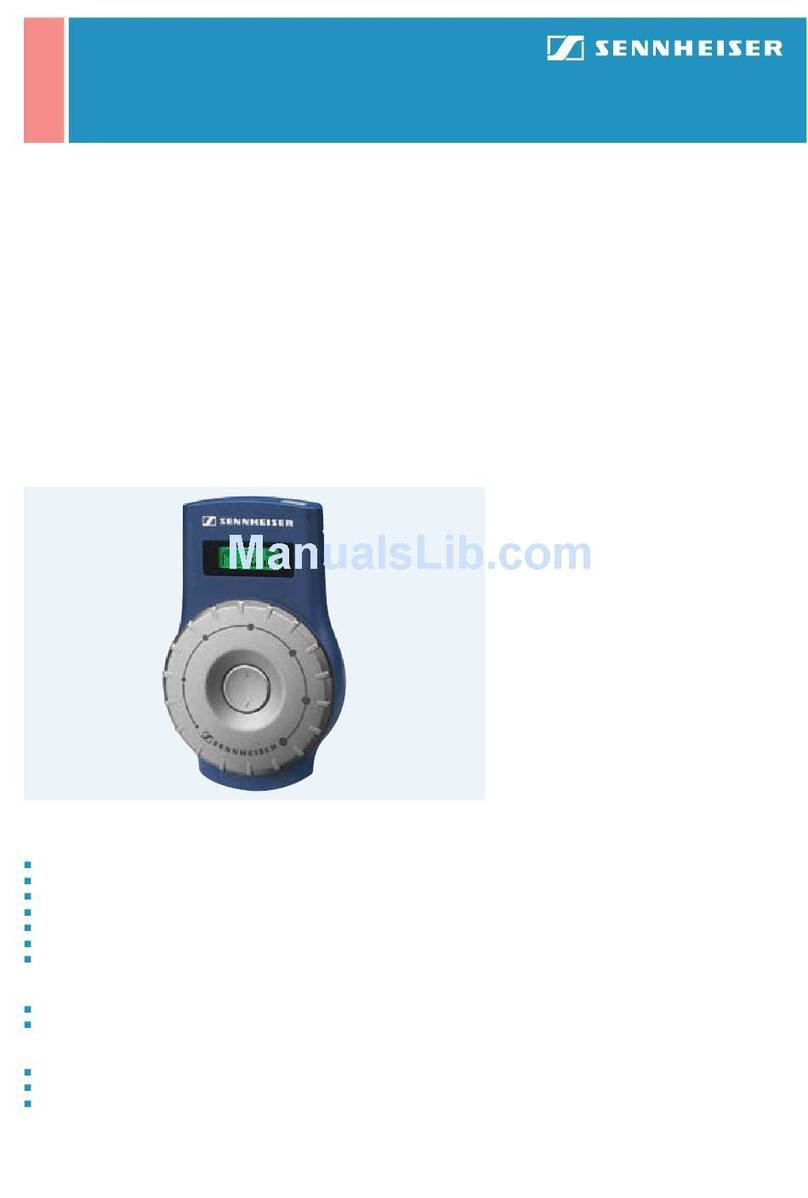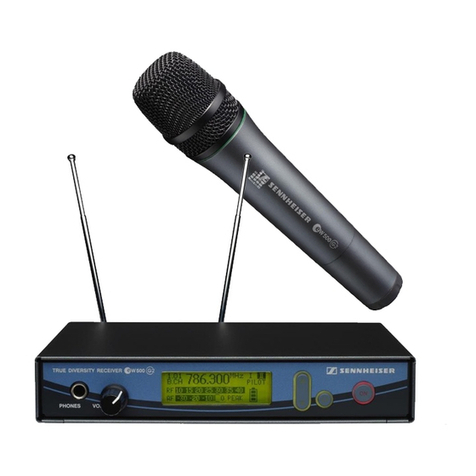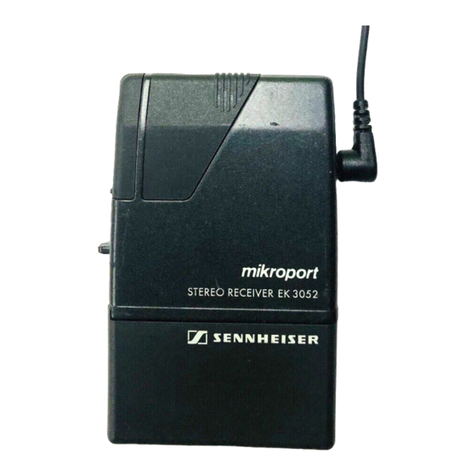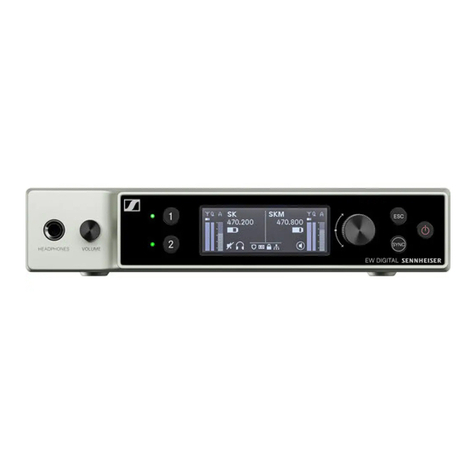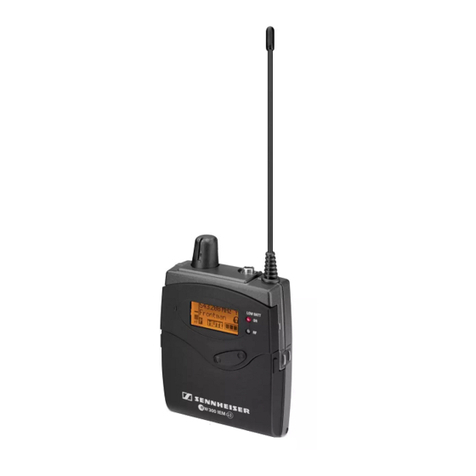
Digital 9000 | 7
EN DEFRITESPTNLPLSEDKFIGRTRRUZHKO JA
COMPLIANCE
Specifications
System
Frequency range 470 - 798 MHz, expandable to 934 MHz
Transmission system digital modulation
“HD” mode:
“LR” mode: without audio data compression
SeDAC (Sennheiser Digital Audio Codec)
Audio frequency response 30 Hz to 20 kHz (3 dB) with SK 9000 Line-In/Mic
80 Hz to 20 kHz (3 dB) with SKM 9000
Dynamic range 112 db (A)
Latency Analog audio out:
Digital audio out: 3.2 ms
3 ms (AES-EBU)
Total harmonic distortion
(THD) “HD” mode:
“LR” mode: < 0.01 % (at 1 kHz)
< 0.03 % (at 1 kHz)
Temperature Operation:
Storage: -10 °C to +50 °C
-25 °C to +70 °C
Relative air humidity Operation:
Storage: Max. 85% at 40°C (non-condensing)
Max. 90% at 40°C
Dripping and splashing
liquids The product must not be exposed to dripping and splashing (IP2X)
Shock resistance as per IEC / EN 60068, T2-27
EM 9046
Receiving channels 8
Receiver principle Double superheterodyne
Diversity True bit diversity
Frequency range 470 - 934 MHz
Sensitivity “HD” mode:
“LR” mode: −86 dBm
−100 dBm
Audio output voltage XLR balanced, -10 dBu to +18 dBu in steps of 1 dB (2 kΩ)
Digital audio outputs AES3-2003, XLR-3, 44.1 kHz; 48 kHz; 88.2 kHz or 96 kHz, 24 bit, externally
synchronizable
8 XLR-3 sockets and 1 multicore/sub-D socket (25-pin)
Audio output sockets can be equipped with 2 audio modules, analog (AAO), digital (DAO) or mixed
8 XLR-3 sockets and 1 multicore/sub-D socket (25-pin) per audio module
Headphone output 2 x 100 mW at 32 Ω, short-circuit proof
Antenna inputs 2 N-type sockets (50 Ω)
Daisy chain outputs 2 N-type sockets (50 Ω),
amplification: 11 dB ±0.5 dB (related to booster input)
Daisy chainable receivers
(HF) max. 4 EM 9046 (32 channels)
Booster supply 12 V $, max. 200 mA each via antenna sockets, short circuit proof
Word clock input BNC, 75 Ω, transformer balanced, AC-coupled
input voltage range: 200 mV … 5 Vpp
max. input voltage: 15 V (DC + AC)
Word clock output BNC, 75 Ω, AC-coupled
output voltage: 3.0 Vpp ±500 mV at 75 Ω source impedance
Word clock sampling rates 44.1 kHz; 48 kHz; 88.2 kHz or 96 kHz
